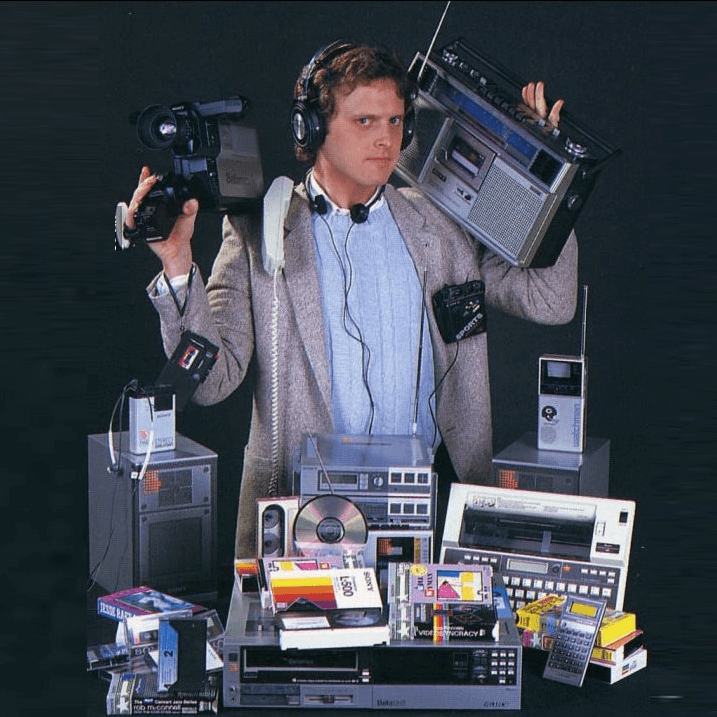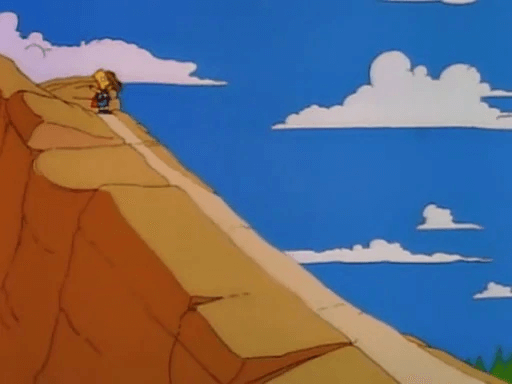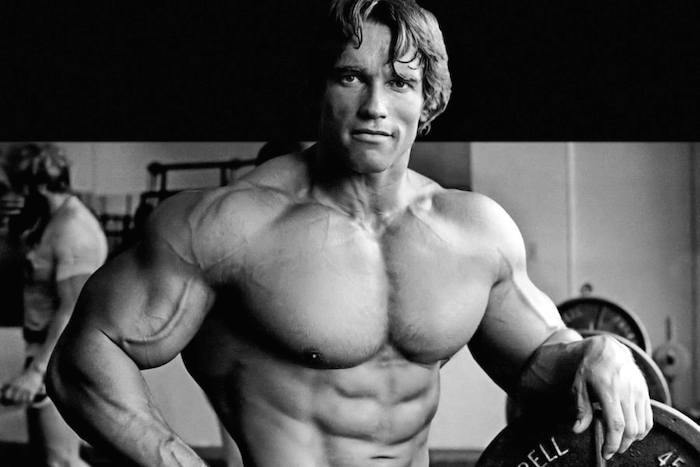Depending on how your YouTube algorithm is tuned, you may have stumbled upon a series of videos titled “Reject Modernity, Embrace Masculinity”.
Here is one for reference—
We could dismiss this video as an inconsequential meme. Perhaps it is.
But it’s a little strange that this video has over two million views.
And that there are hundreds of these same memes popping up all over YouTube (here are a few more [1] [2] [3] [4] [5]), which collectively have many millions of views.
After showing a few people these videos and receiving wildly different reactions, it seems these videos are touching on something. Something primal.
Before getting into people’s reactions, let’s outline the meme’s format.
Note that there are a few variations of this meme, but the core narrative is—
- The video begins with various short clips of men doing things their grandfathers would not approve of. Such as wearing dresses, dressing up in dog and baby outfits, simping, or being grotesquely obese. Music with a dark tone is playing in the background.
- The music changes to a more upbeat tone while showing a cut of Zyzz.
- Various short clips play of (mostly ripped) men doing things that would make their grandfathers proud. Like lifting heavy weights, slam dunking a basketball, winning the 100-meter sprint, and choking out Connor McGregor.
The reactions to these videos range from a blank face (they have no idea what they’re watching) to being awestruck.
This makes sense when we consider that the video is a meme. And like all memes, it is only intelligible to those with sufficient context.
So what is the context?
Modernity
When we speak of Modernity, we generally refer to “The West”.
The modern age of technology.
A period in human history where you have immediate access to more information and entertainment than you could ever hope to consume.
Where everyone carries a magical device that can capture and store their fondest memories, give directions, order food, entertain them with an endless stream of content, and keep them connected to the rest of the world.

Pre-smartphone
Modernity has bestowed a life of comfort to much of the western world.
But this comfort has come with some drawbacks, which we also associate with Modernity.
There is an apt quote from political philosopher Kenneth Minogue, who speaks of “St George in Retirement” syndrome—
The story of liberalism, as liberals tell it, is rather like the legend of St. George and the dragon. After many centuries of hopelessness and superstition, St. George, in the guise of Rationality, appeared in the world somewhere about the sixteenth century. The first dragons upon whom he turned his lance were those of despotic kingship and religious intolerance.
These battles won, he rested for a time, until such questions as slavery, or prison conditions, or the state of the poor, began to command his attention. During the nineteenth century, his lance was never still, prodding this way and that against the inert scaliness of privilege, vested interest, or patrician insolence.
But, unlike St. George, he did not know when to retire. The more he succeeded, the more he became bewitched with the thought of a world free of dragons, and the less capable he became of ever returning to private life. He needed his dragons. He could only live by fighting for causes—the people, the poor, the exploited, the colonially oppressed, the underprivileged and the underdeveloped.
As an ageing warrior, he grew breathless in his pursuit of smaller and smaller dragons—for the big dragons were now harder to come by.
Kenneth Minogue, Source
Modernity (“The West”) has slain the dragon of slavery. Along with the dragons of tyranny, abject poverty, and blatant racism.
Are there still dragons (large problems) in the world? Yes. A lot of them.
And we need people to go out there and slay these dragons.
But the remaining dragons are either too far away from the proverbial St George’s of Modernity (like poverty in African countries).
Or they are perceived as “too difficult” (like space travel).

Born just in time to kill lizards
So instead of chasing after dragons, Modernity has gone chasing after lizards.
(Lizards kind of look like dragons. But they’re not dragons. They’re lizards).
In recent years, Modernity has found a lizard called “Masculinity”.
And as Modernity sees this lizard as a dragon, it has swung at it with full force. With a level of anger and rage as if it were swinging at one of the great dragons of tyranny or racism.
When doubts arose about whether this lizard was a dragon, Modernity began to exaggerate the dragon-like aspects of the lizard.
But it’s not a dragon. It’s a lizard.
Okay. I’ll break the St George-dragon analogy here.
But the point being made here is—
Modernity, with a perceived lack of accessible, solvable problems, has identified “Masculinity” as a serious threat to our society. A threat that needs to be eliminated.
Perhaps you think this claim is exaggerated.
While you agree that there seems to be a fringe movement of TikTok influences who want to eliminate masculinity, it’s not “Modernity”. It’s not a mainstream view.
Well, here is a quote from the American Psychological Association (APA), in their 2018 “Guidelines for Psychological Practice with Boys and Men”—
“Although there are differences in masculinity ideologies, there is a particular constellation of standards that have held sway over large segments of the population, including: anti-femininity, achievement, eschewal of the appearance of weakness, and adventure, risk, and violence.
These have been collectively referred to as traditional masculinity ideology.”
APA, Source, Page 2-3
The APA further note that—
“[…] traditional masculinity ideology can be viewed as the dominant (referred to as “hegemonic”) form of masculinity that strongly influences what members of a culture take to be normative.”
APA, Source, Page 6
So the APA believes that “traditional masculinity” is the “dominant form” of masculinity and is “normative”.
i.e. what the APA calls “traditional masculinity” is roughly equal to what society associates with “masculinity” (I will hence use the terms interchangeably).
The APA characterize masculinity by six primary traits—
- Anti-femininity
- Achievement
- Eschewal of the appearance of weakness (i.e. to avoid appearing weak)
- Adventure
- Risk
- Violence
And what does the APA think will happen to men who exemplify this “masculine ideology” characterized by their desire for risk, adventure, and achievement?
In their own words—
“[…] socialization for conforming to traditional masculinity ideology has been shown to limit males’ psychological development, constrain their behavior, result in gender role strain and gender role conflict, and negatively influence mental health.”
APA, Source, Page 3
If it’s not clear what they’re saying, renowned psychology professor and clinical psychologist Jordan Peterson, translated their academic-speak nicely—
The authors are claiming that men who socialize their boys in a traditional manner destroy their mental health.
Jordan Peterson, Source
So. The APA. Who accredits university-based clinical psychology programs. Thinks that you are destroying the mental health of boys if you socialize them in a way that promotes anti-femininity, achievement, and adventure. Read that again.
If you want to learn how the APA justifies the recommendations they made in these guidelines, I would recommend reading Jordan Peterson’s full article on the topic.
But suffice to say, the view that masculinity is a threat that needs to be eradicated is not a “fringe” view.
This pervasive view is present in pre-eminent scientific organizations like the APA, in universities, and it has disseminated all the way down to popular TikTok videos.
Make no mistake. Masculinity is under attack.
Masculinity
Almost anything good is bad in excess.
(by definition, since excess means “more than desirable or necessary”).
This applies to what we eat, how we spend our time, and our personality traits.
Drinking water is good. In excess, it will kill you (water intoxication).
Weightlifting is good. In excess, it can result in overtraining and injury.
Compassion is good. In excess, you care so much for others that you neglect to look after yourself.
Masculine personality traits are not exempt from this.
Take risk for example. Risks can be beneficial or costly.
The riskier the choice, the greater the variation in outcome (higher highs and lower lows).
Hence the cost of losing must be weighed against the benefits of winning.
An excessive appetite for risk can skew this weighting of costs vs benefits. Individuals can overly discount the potential costs of their decision.
Taken to the extreme, it’s easy to see how damaging these risks can be.
For instance, you should think twice before jumping over an 82-ft gorge.

Don’t do it son
The reward (admiration from your peers) is perhaps not worth the 100% chance that you will fall to your death.
But to say that risk is always bad is to misunderstand risk.
We encounter risk in every facet of our lives.
Even if we don’t engage in conventionally “risky” activities like highlining or bungee jumping, we are not avoiding risk altogether.
We risk getting into a car crash every time we get in a car.
We risk increasing our chance of dementia every time we put off going to bed.
We risk an earlier death every time we make poor diet choices.
Even inaction involves risk. If you curl up into a ball and hide under your bed, while you have lowered your risk to zero for being in a car accident, your risk of leading a stagnant and unfulfilling life is approximately 100%.
Not taking a risk, is a risk.
So risk in excess is harmful. But a proper amount of it is not only tolerable, but necessary and desirable.
(people who are so risk-averse that they cannot leave environments that they consider safe are diagnosed with agoraphobia, an anxiety disorder. Society clearly thinks a certain amount of risk is healthy).
This “desirable level” exists for all six masculine traits listed by the APA.
Let’s remind ourselves of those traits—
- Anti-femininity
- Achievement
- Eschewal of the appearance of weakness (i.e. to avoid appearing weak)
- Adventure
- Risk
- Violence
All of these traits can be beneficial in the proper dose. That dose is not zero.
Violence is perhaps the hardest trait to defend.
You might (reasonably) think, “Surely zero violence is a good thing?”.
But unless every conscious being (including animals) took an unbreakable vow never to commit an act of violence, then violence is at least necessary in self-defense. And to protect your loved ones.
If someone breaks into your home and threatens your wife and kids with violence, then a retaliation of violence may be your only way to defend what is most important to you.
So from a practical standpoint, some level of violence is desirable.
The same can be said for all six of the masculine traits mentioned—they are all beneficial at some non-zero level.
This is one of the ideas that underlies the “Reject Modernity, Embrace Masculinity” meme.
Let’s take a look at another one—
The masculine traits listed by the APA are embodied in the “Reject Modernity, Embrace Masculinity” meme.
The “Modernity section” has examples of people exemplifying the opposite of these masculine traits—such as extreme femininity or embracing appearing weak.
While the “Masculinity section” has examples of people manifesting these masculine traits—men in the military (violence/risk), firefighters running into burning buildings (risk), and men winning competitions (achievement).
The meme alludes to an uncomfortable but valid concern—
(1) If masculinity is eliminated, who will fulfil the essential roles in our society which require the embodiment of masculine traits?
And another less contentious concern—
(2) How can masculinity be bad, if men derive so much positive emotion from these masculine activities?
Regarding (1), while it’s often highlighted that men occupy the majority of the positions of power in our society—such as in the C-Suite and politics—it is rarely pointed out that this only represents a tiny proportion of men.
Most men do not have jobs granting them a lot of power and influence.
A much larger proportion of men have dangerous, physically demanding jobs.
Positions such as being a soldier, a firefighter, a roofer, a mechanic, a bricklayer, or a plumber.
Many of these jobs are seen as “unglamorous”, such as being a coal miner or garbage collector.
But they are essential roles that support the infrastructure of Modernity.
Masculine traits—such as risk, adventure, and the avoidance of appearing weak—are necessary to fulfill these roles.
It’s at least part of why these careers are overwhelmingly male-dominated (over 95% of firefighters are male).
While it’s easier to see how masculinity is necessary in blue-collar roles (i.e. physically demanding work), masculine traits are still valuable in white-collar roles.
The iPhone, and Apple as a company, would not exist without Steve Jobs’ strong sense of adventure, achievement, and appetite for risk.
Steve’s decision to slash 70% of Apple’s product line was a bold, risky move. But it paid off.
Apple went from 90 days away from bankruptcy (and a $1.04 billion loss) in 1997 to a $309 million profit in 1998.
(today the company is worth over two trillion dollars, which is more than the GDP of Italy).
Entrepreneurship is a major factor in economic development, and entrepreneurs (like Steve) tend to have a high need for achievement and risk-taking propensity.
Which are, by the American Psychologic Associations’ own definition, masculine traits.
Masculinity has helped to create and sustain a lot of the good that we associate with Modernity.
So perhaps we should more carefully consider what else we’ll be eliminating along with “masculinity”.
Regarding (2)—
(2) How can masculinity be bad, if men derive so much positive emotion from these masculine activities?
In the “Reject Modernity, Embrace Masculinity” memes, men lifting heavy weights are the most common clips used to represent masculinity.
It seems that within our society, the gym is one of the few places left where men can express their
masculinity
with no minimal judgment.
They can—
- Wear clothes that show off their muscles.
- Grunt.
- Engage in “bro talk”.
- Lift weights on the edge of their ability.
- Slam heavy weights to the ground after completing a lift (when the gym staff isn’t watching).
- Embrace feelings of strength.
All of these embody masculine traits.
(1) to (3) represent forms of Anti-femineity.
(4) is Risk.
(5) is Violence (against the nonconscious weight. It’ll be fine).
(6) is to Avoid Appearing Weak.
If the gym is the only place where such expression is allowed, perhaps it’s no surprise that men are flocking to gyms.
Another trait expressed in the gym is that of Achievement.
Achievement is the attainment of a goal.
Weight lifting is particularly effective as a goal, as it can be clearly defined (“I want to bench 100 kg”) and has obvious markers of progress (the weight on the bar and your physique).
It is also difficult. And it’s difficult in its most raw and obvious form to you and others—physically difficult.
Having clear, difficult goals, with obvious markers of progress, has been shown to improve performance and subjective well-being.
You feel elated when you achieve these goals.
So perhaps it’s no surprise that men derive positive emotions from weight-lifting and other achievement-bearing activities.
But if we examine the clips shown in the masculinity section, it’s not just achievement that is being embodied. Rather, there is a particular type of goal that is being achieved.
There are no video clips of people scoring high on an exam. Or learning how to bake. Or becoming a better listener.
While this may in part be due to these goals being hard to capture in a short video clip, I don’t think that’s the only reason.
It’s because these goals lack sufficient risk.
Achievement and risk are the most common themes underlying the clips in the masculinity section.
The men in these clips are not just achieving something.
They are achieving something risky. There is some aspect of danger.
The danger of physical injury (e.g. weight-lifting, fighting). Or of death (e.g. soldier, firefighter).
This is perhaps what distances a more masculine form of achievement from the more generic form of achievement.
It’s the attainment of a goal that involves at least a moderate amount of risk.
Higher risk-taking in men has been well-documented, and this asymmetry seems to have evolutionary roots.
Sexual selection favors males who engage in competitive behavior and costly displays to attract females.
Risky behavior signals bravery and toughness. This may serve as a cue for a male’s position in a dominance hierarchy, and hence their ability to provide.
Perhaps then it’s no surprise that the presence of an attractive woman elevates physical risk-taking and testosterone in men.
Men seem to be more inclined to take risks than women, which is being captured in the “Reject Modernity, Embrace Masculinity” meme.
To be clear, I don’t think that just because something is natural, that makes it good (naturalistic fallacy).
As mentioned, risk is clearly not a good thing in excess.
This higher appetite for risk is a large factor in why young men have the highest chance of dying in a car crash.
While we should avoid overdoses of risk, there are psychological and material benefits to taking calculated risks.
Risks can be beneficial or costly.
The riskier the choice, the greater the potential benefit. But it’s also less likely that this risk will be realized.
Hence the cost of losing must be weighed against the benefits of winning.
A calculated risk that many men engage in is lifting weights or doing a form of martial arts.
While there is a risk of injury, many have decided that the benefits of engaging in these activities outweigh the costs.
The material benefits are easier to notice, such as an aesthetic body (weight-lifting) and the ability to defend yourself (martial arts).

“Oh, I see you’re admiring my calculated risk?”
But there are also psychological benefits. And these benefits have been reported by men of many different shapes, sizes, and temperaments.
From the muscular, extroverted Arnold Schwarzenegger televising that weight-lifting feels like he’s “cumming in the gym”.
To the nerdy, introverted Mark Zuckerberg doing jiu-jitsu every day because it’s “super engaging physically, but also intellectually”.
Although the risk in these activities pale compared to what our ancestors faced, it is still there.
And while risk is not the only contributing factor to what makes these activities “feel good” (exercise in general has been shown to increase mood), it plays a role.
To again quote Mark Zuckerberg (the founder and CEO of Facebook) on his personal experience with jiu-jitsu—
”My mum made me do three varsity sports, and my life took a wrong turn when I decided to do fencing competitively instead of wrestling in high school”
[…]
”There is something that is just so primal about it [jiu-jitsu]”
Mark Zuckerberg, Source
I’m using Zuckerberg’s anecdote not because I think society sees him as the symbolic representation of masculinity—but rather the opposite.
When we think of “traditionally masculine” men, Zuckerberg probably isn’t in your top ten.
But Zuckerberg still experiences a lot of benefits associated with the expression of masculine traits.
Last quote from Zuck—
“The question isn’t how did I get into [jiu-jitsu], it’s how did I not know about it until just now […] from the very first session that I did, like 5 minutes in I was like ‘Where has this been my whole life’?”
Mark Zuckerberg, Source
Discouraging men from engaging in these risk-taking, masculine activities is depriving them of material and psychological benefits.
Why Does This Matter?
Society is constantly telling us that strong men are dangerous.
And that’s partly because it sees Western Culture as a tyrannical patriarchy, and the only way you get to the top is by misusing power.
So all the men who are at the top of this hierarchy are all misusing their power and they’re all tyrannical.
And all the men who have the aim and ambition to strive upwards are all tyrants-in-training.
That’s the basic attitude that we have towards our own culture and towards young men now.
Everything about that view is pathological, inexcusable and shameful.
Adapted from Jordan Peterson, Source
A lot of men are suffering because Modernity tells them that their aims and ambitions are “toxic”.
That they represent the antiquated “traditionally masculine” view, and that this indicates an underlying problem in their psychology.
This is a lie.
It is a lie that aims to suppress and punish men for their ambitions.
It harms men by limiting the positive emotion that comes with expressing their masculinity.
It harms men by barring them from the rewards society would (gladly) offer them were they to embody the positive aspects of their masculinity.
It harms women by poisoning their relationships with men (why would women want to associate with tyrannical patriarchs?).
It harms children by depriving them of a father figure.
And it harms society by nullifying all of the positive impact men could offer by embodying their masculinity.
Do bad men exist? Yes, absolutely.
Bad humans exist. Men and women.
Bad men are just bad humans who happen to be men.
Memes carry cultural ideas.
I think the cultural idea underlying the “Reject Modernity, Embrace Masculinity” meme is—
It’s not just okay to be a man. It’s necessary.
We need men.
Do not be ashamed to be a man.
Reject Modernity. Embrace Masculinity.
Footnotes
Adjacent Memes
There are memes similar to the “Reject Modernity, Embrace Masculinity” meme—“adjacent memes”—which carry a similar cultural idea.
First are “Little Dark Age” memes.
While usage of the meme is broad, the basic premise is that it plays the song Little Dark Age by MGMT slowed & reverbed while displaying imagery of decadence.
Here is one titled “Little Dark Age - Strong Men” (1.5+ million views)—
And another titled “Little Dark Age - Masculinity” (2.7+ million views)—
Second are “After Dark edit” memes.
Again, while usage of these memes is broad, the basic premise is akin to “Little Dark Age” memes—except this time the decadence is to the song After Dark by Mr. Kitty (slowed & reverbed, of course).
Here is one titled “BE A MAN ~ After Dark edit” (1.7+ million views)—
And another titled “Fight Club | Embrace Masculinity | After Dark” (500k+ views)—
These memes have obvious parallels to the “Reject Modernity, Embrace Masculinity” meme.
The memes encourage men to reject modern notions of femininity and weakness, and to instead embrace masculinity and strength.
There are also anime-esk variants of the “Reject Modernity, Embrace Masculinity” meme.
They have a similar format to the original, with Modernity at the start of the video represented by hentai (a vice of the modern man).
They then transition into clips of masculine anime characters, such as Jack Hanma (from Baki the Grappler) and Goku (from Dragon Ball Z).
Here is one for reference (1.6+ million views)—
I mention some of these adjacent memes as they further illustrate how widespread these ideas are.
(if you were to add up all of the views across these memes, we’re now at over a hundred million views).
Censorship
Censorship has arisen in response to the spread of these memes.
Details and examples to come.
(consider bookmarking this page, as it may not be easily accessible on Google in the future).
